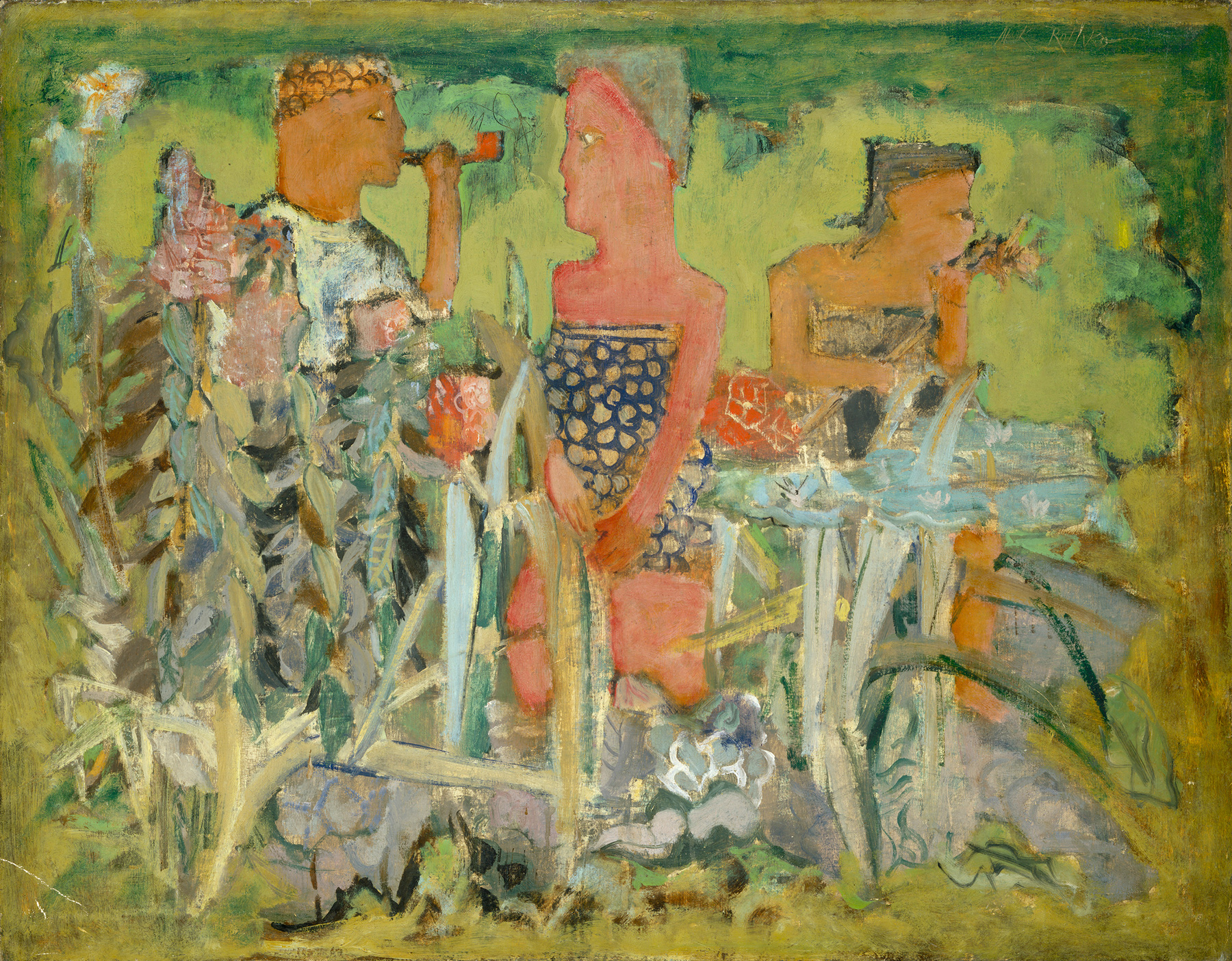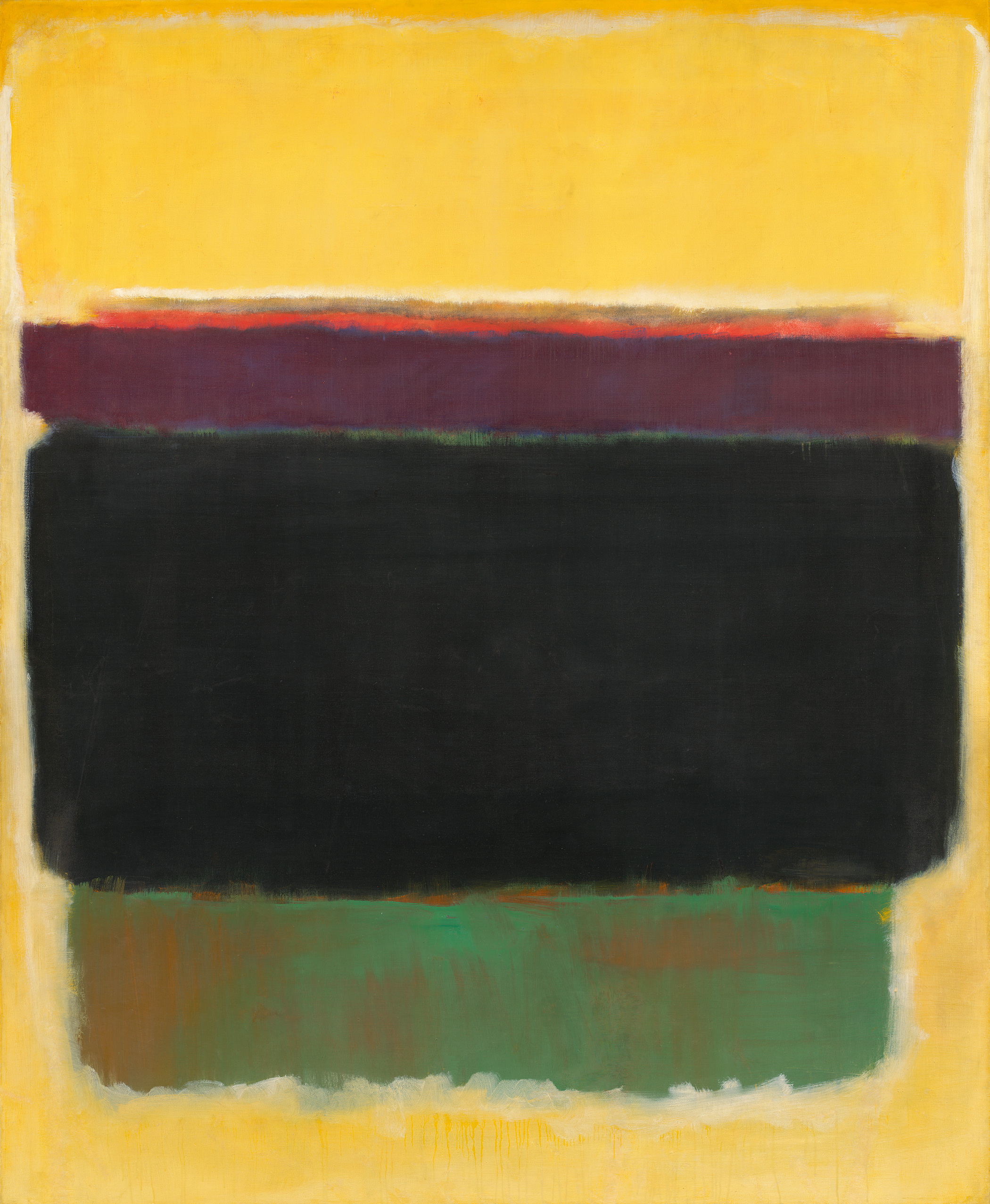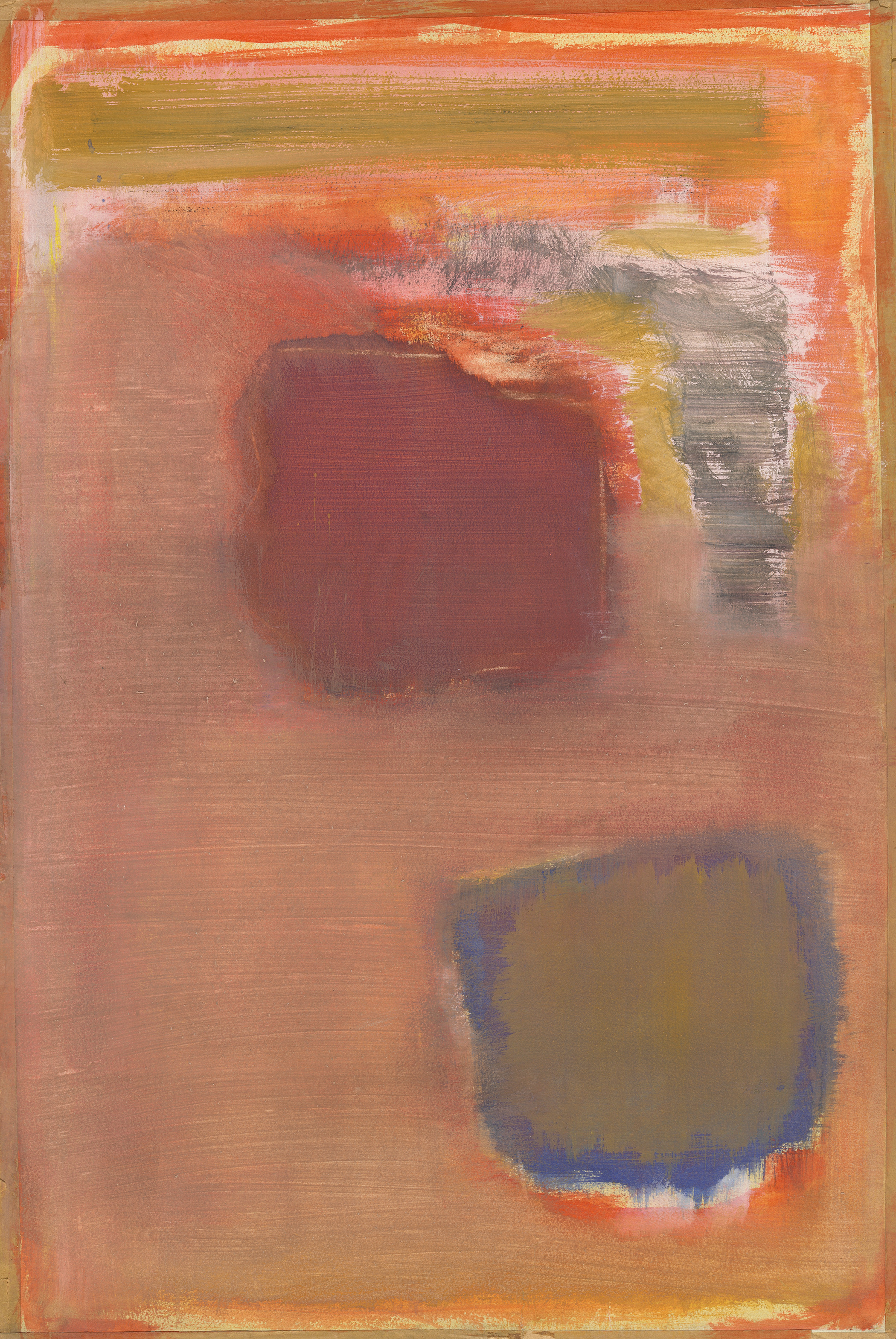 Some important things need to be said about the Mark Rothko exhibition that is both BY and AT the Columbia Museum of Art that don’t have much to do with the art. First let’s do the art in Mark Rothko: The Decisive Decade 1940 – 1950. And the art is very good indeed.
Some important things need to be said about the Mark Rothko exhibition that is both BY and AT the Columbia Museum of Art that don’t have much to do with the art. First let’s do the art in Mark Rothko: The Decisive Decade 1940 – 1950. And the art is very good indeed.
These 30 or so pieces reveal how the artist moved from figurative work to the large paintings of glowing blocks of color for which he is best known. The latter paintings make up only a tiny part of the exhibition, but the earlier works – influenced by dreams, mythology and showing the heavy influence of surrealism – are rewarding to offer those who love Rothko’s mature works, those familiar with his entire career and those who know nothing at all about him.
This compact and manageable exhibition reveals the artist’s journey through the decade that made Rothko Rothko with excellent examples of his work and a nearly perfect installation.
The show begins with a painting of three people from 1940 that few would guess was by Rothko. At first the work doesn’t seem to add much to the exhibition, but it’s important because of the number three. In the following paintings three figures are merged into one with distinct segmentations of heads, torsos and legs. These divisions eventually transform into three stacked blocks of color. Even when the body is long gone the body is still a good way to feel the power of the paintings – they provide a full body experience.
This exhibition shows the artist finding his way by experimenting with various approaches. The pieces from the first few years of the ‘40s are filled with scrawled lines of what look like fantastical creatures and plants, but at the same time are abstract. In 1946 the artist began creating with amorphous patches of color that became more spare as each month passed. No doubt Rothko’s actual process was more messy than this exhibition shows, but one has to admire how far the artist progressed in a decade – especially since he was already 37 when he started the journey. The museum has so keenly honed this exhibition it feels that one more or one less work would have ruined it.
The exhibition has the bonus of a sampling of works by Rothko’s colleagues Clyfford Still, Arshile Gorky, Adolph Gottlieb, Theodoros Stamos and others that provide a perfect context. It’s also a treat to see a works by these artists who are just as rare in South Carolina as Rothko.
Rothko was a smart and well-educated man (he attended Yale), but he had little art training. One could never tell by looking at his art. He is undoubtedly one of the greatest artists of the 20th century. What he had to say about his art – and all art – is another matter. Like several artists of the time, Rothko viewed art as a huge, transforming experience, but many of his pronouncements meant to be profound are preposterous. Even if a number of them are posted on the museum walls they take nothing away from the art.
Setting aside the art itself, The Decisive Decade is arguably the best and most important exhibition the museum has organized in its 60-year history. That though must be put in context; the museum has made great strides during the past decade in building its collection and expanding programming, but it has failed to organize significant exhibitions.
The museum has hosted many important exhibitions in recent years: Nature and the Grand American Vision: Masterpieces of the Hudson River School Painters, Turner to Cezanne: Masterpieces from the Davies Collection, National Museum Wales, Material Terrain: A Sculptural Exploration of Landscape and Place, Julie Heffernan: Everything That Rises and I Heard a Voice: The Art of Lesley Dill. It created none of them.
Rothko changes that. Let’s hope this is the start of a new chapter for the museum as a place that organizes important exhibitions.
This was a very unlikely exhibition for a museum that owns no Rothkos and few works from this period of American art. The museum’s most significant holdings are in European art from 1400 to 1800 which would seem to be the place to look for a big self-generated exhibition. Even the curator who conceived of the Rothko show, Todd Herman, is a Renaissance expert.
Fortunately museum director Karen Brosius has well-connected colleagues in the museum world thanks to her years of funding art projects at the Philip Morris Companies. Among them is Earl Powell III, director of the National Gallery of Art. (The museum also has a long connection with the National Gallery through its Renaissance and Baroque artworks – donations of those by the Kress Foundation in the 1940s and 1950s made the Columbia Museum and the National Gallery possible. Some of the art at the Columbia once belonged to the National Gallery.)
The Columbia Museum approached the National Gallery about a Rothko loan -- and with 1,000 Rothko works, the most by any single artist, the gallery has plenty from which to choose. The art museum started with the idea of a much smaller show, then seized the opportunity to create an exhibition that would not just show off an art star, but would add to scholarship on a period of the artist’s life that has been largely unexplored. (When Herman left the museum last year to become director of the Arkansas Art Center, new chief curator Will South – who is an expert in early 20th century American modern art – took the reins and guided the show to its wonderful fruition.)
With Skira Rizzoli Publications the museum has published an excellent catalog edited by University of South Carolina associate professor Bradford Collins (a feather in the cap of Collins and USC), with insightful essays by Collins, Herman, National Gallery contemporary and modern art curator Harry Cooper and others. The exhibition will travel to Ohio, Arkansas and Colorado putting the Columbia Museum in a much-deserved spotlight.
If the museum had organized an exhibition only half as good as this, it still would have been a milestone. For a museum with little expertise in the area to tackle an exhibition like this can only be called audacious. Or crazy. Or brilliantly imaginative. We’ll come down on the side of audacious and brilliant.
The Decisive Decade remains on display through Jan. 6.
-- Jeffrey Day




